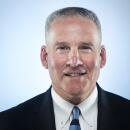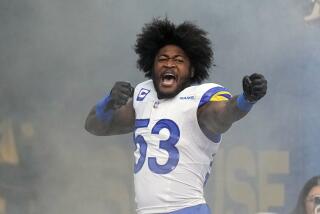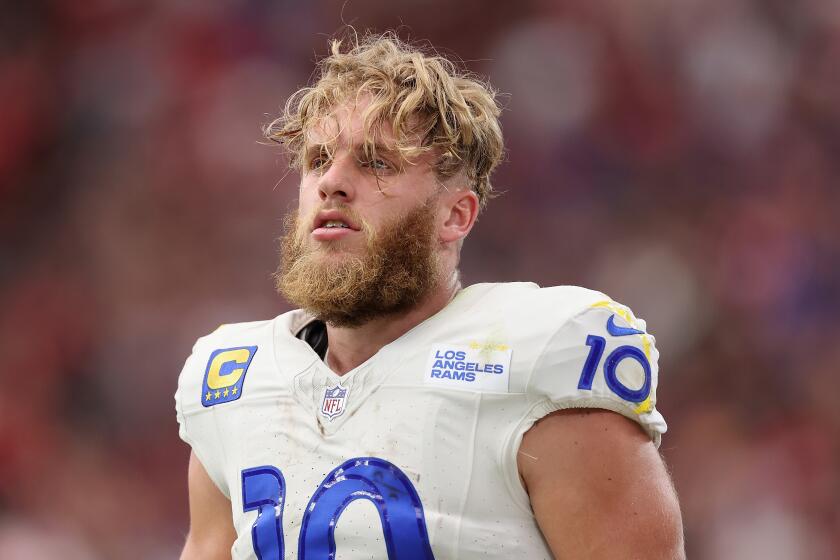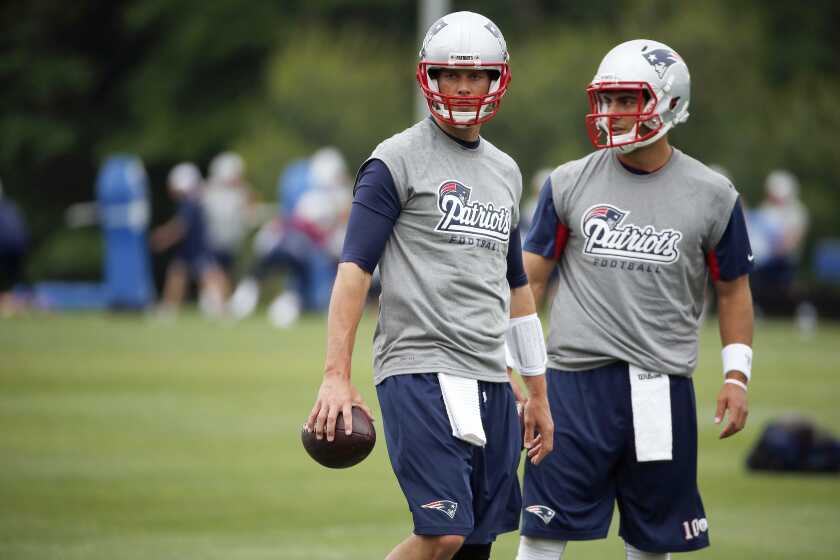Scouting is a year-round job for the Rams
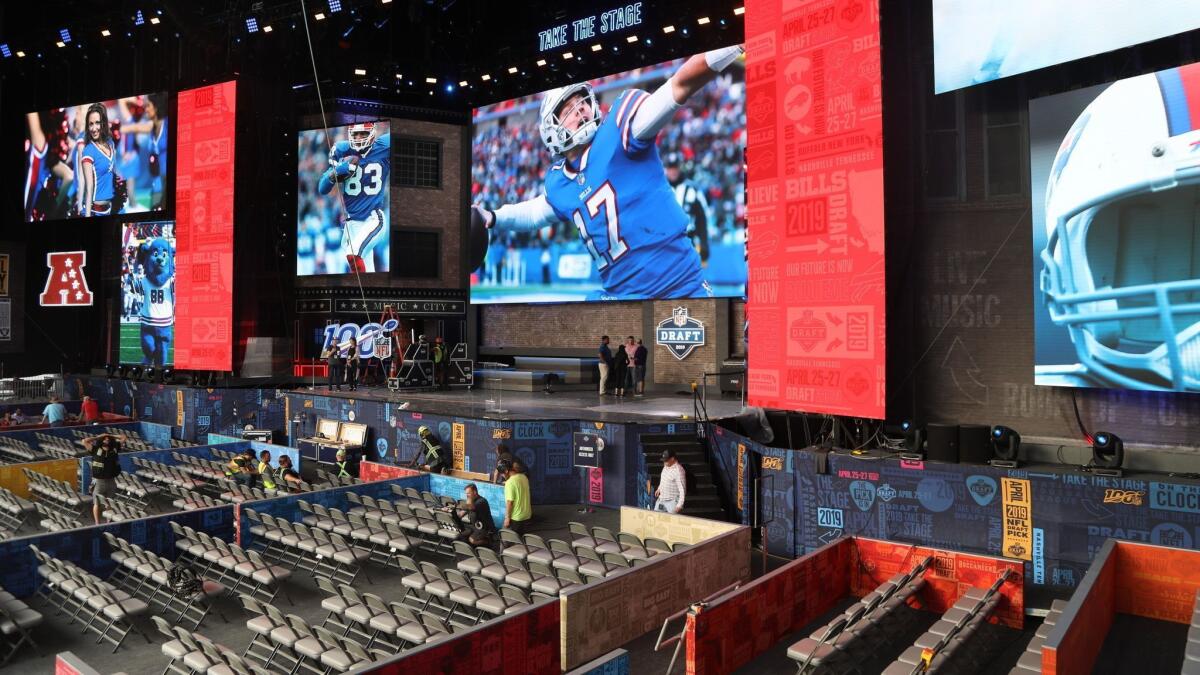
The results from a year of scouting and research will start to pay dividends when the NFL draft kicks off Thursday in Nashville with first-round selections.
The Rams hold the No. 31 pick, and six picks in Rounds 3 to 7 Friday and Saturday.
Depending on the players available when their turn comes up, the Rams might make a first-round selection for the first time since 2016, or they might make a trade to move back in the draft and acquire more picks.
Whatever they do, they will be armed with data about every player available, the culmination of work built on the foundation of information gleaned from area scouts.
The yearlong scouting calendar, which already has turned to the 2020 class, has a number of mini-seasons.
This is how the Rams got here ...
Summer
Summer for most people begins in June, but for Rams scouts April and May qualify. Last year at this time â before the 2018 draft â they already were looking ahead to 2019 class. That meant making sure rosters and playersâ jersey numbers were up to date for tape study.
Area scouts congregate in Thousand Oaks for predraft meetings, but they already are studying tape.
âIf you take your time and watch and donât be in a hurry to finish it,â says John Zernhelt, who scouts the Northeast for the Rams, âyou get a real good feel for what youâre looking at when you go out in the fall.â
Scouts also must prepare for changes. College programs often allow players to change numbers when others leave the program, creating minor chaos for scouts.
âIt doesnât sound major,â Zernhelt says. âIt is to me because Iâm not the worldâs greatest secretary.â
August
The theme for August scouting can be summed up in one word.
âLogistics,â says Chance Trickett, who scouts schools in Colorado, Wyoming, Minnesota, North Dakota, South Dakota and parts of Missouri.
This is when schools set their restrictions for when scouts can visit, if they hadnât done so in July.
That is important information for scouts mapping daily schedules in advance for August through November. Nearly all scouts cover their vast territories by car. Trickett does more air travel than most because his area is so far-flung.
âItâs almost like youâre fitting puzzle pieces,â Trickett says, âtrying to make it all come together.â
College training camps begin in August, and that is an opportunity for scouts to see players for the first time. They are assessing body type, noting how players look and move in person compared to how they appear on tape.
âAnd then, really, getting the chunk of the character,â Trickett says.
Because the pressure of the season is not yet weighing them down, coaches are more relaxed about discussing players and their backgrounds.
âTheyâre a lot more open,â Trickett says. âItâs a lot easier to be around at that point.â
Fall
Once college season starts, scouts are on the road every day.
They double-check where to park on campus, where the football complex is located and with whom they are scheduled to meet.
Their days begin at about 5:30 a.m., says Michael Pierce, whose Southeast area includes Florida, Georgia and the Carolinas.
âYou find that Dunkinâ Donuts or Krispy Kreme, and youâre taking that on the visit, giving that to the first person you see there,â Pierce says. âYouâve got to make sure you know where the donut place is.â
The football departmentâs pro liaison usually greets the scouts and shows them where they can watch tape. Scouts also try to meet with strength coaches and academic advisors.
âThe schools that make those people available, itâs like the dream â you get a chance to go in and meet everybody,â Pierce says. âBut if not, you have to make sure you maneuver to find those people and find the time to go do that.â
Pierce gets to practice early in hopes of speaking with a coach. Then he evaluates players and how they might fit with the Rams.
On game days, he goes in with a plan. How does the quarterback interact with teammates after good plays? After breakdowns? What are the matchups to focus on?
He is near the field for pregame warmups. For the game, he retreats to the press box and uses binoculars to focus on matchups and demeanor.
âYou want to see how this person reacts because heâs going to win some battles and heâs going to lose some,â he says. âAlso, you want to see the sideline. Is this guy sitting on the end of the bench when everybody else is sitting together?â
After the game, heâs thinking about the next day.
âYouâre getting back into your car and youâre going to the next school,â he says, âand the process starts again.â
All-Star games
Scouts are forbidden from contacting players during their college careers, so January postseason all-star games such as the Senior Bowl in Alabama, the East-West Shrine Game in Florida and the NFLPA Collegiate Bowl in Southern California offer their first chances to speak directly with prospects.
Scouts arrive the weekend before to start the interview process, to find out if the âDNA matchesâ what scouts have learned from their visits to schools, says Brian Hill, who scouts the Midwest.
âMost of the time, itâs a match,â Hill says. âSometimes, itâs, âOK, maybe heâs not as smart as I thought he was. Or maybe he was better than I thought he was.â â
Rams scouts are assigned specific position groups and watch three days of practices, looking for opportunities to assess players in skills they did not get the opportunity to exhibit with their college teams. For example, how does a running back who did not get many pass-catching opportunities run routes and catch the ball? How does a cornerback who did not play press coverage respond to the new technique?
The practices are especially helpful in evaluating players from smaller schools and how they match up against higher-level competition.
Hill, for example, was the Ramsâ West Coast scout when receiver Cooper Kupp played at Eastern Washington. Hill saw Kupp perform well against several Pac-12 Conference schools, but the Senior Bowl practices cemented the receiverâs status as a prospect.
After the practices â as they do every time a player is evaluated during the year â scouts grade players as hot, warm or cold, general manager Les Sneadâs way of giving scouts opinions in the draft process. The scouts leave the day before the game. They watch it later on tape.
Sign up for our daily sports newsletter Âť
Combine
In late February, more than 300 invited players travel to Indianapolis for the NFL scouting combine, where they are medically evaluated, interviewed and put through physical testing and fieldwork drills.
The arrival and testing of position groups is staggered throughout the week.
The weigh-in gives scouts a chance to determine whether players have gained or lost weight since the end of the season. The bench press measures one element of comparative strength. The 40-yard dash enables players to show their speed.
âThereâs a difference between play-speed and a 40 time,â says Vito Gonella, who scouts the West Coast. âItâs a lot different when someoneâs chasing after you trying to tear your head off. But it helps with clarity.â
The fieldwork drills enable scouts to verify what they saw on tape.
Each team is allowed to formally interview 60 players in 15-minute increments. The area scout is in the room with Snead, head coach Sean McVay and, depending on the playersâ position, offensive or defensive coaches.
Area scouts also will visit a ballroom known as the âtrain station,â where coaches and scouts can speak with players outside the guise of the scheduled formal interviews
âYou just kind of grab and go,â Gonella says.
Pro Day
In March, colleges host events that enable all draft eligible-players in the program to work out for scouts and be evaluated for athletic ability, play speed, strength, competitiveness, toughness, instincts and explosiveness.
âYou have kids that have never played before to the [possible] No. 1 pick,â says Billy Johnson, who scouts a Southeast region that includes Alabama, Tennessee, Kentucky, Mississippi and Louisiana. âThis is the last chance to stay alive, I guess.â
Pro days include physical measurements, testing and occasional drama, especially in situations when a player opted not to participate in a particular test such as the 40 at the combine.
Scouts also can watch players up close in drills, performing skills specific to their scheme.
âIt can help or it can hurt, but itâs not the final say,â Johnson says of pro days. âItâs just part of the puzzle.â
Along with scouting the players, scouts are also scouting the scouts, noting which teams, personnel directors and coaches were in attendance. That can help on draft day.
âItâs a little bit of a spy game, but everyoneâs doing it,â Johnson says, chuckling.
Tier 4
As the Ramsâ draft board comes together, prospects can end up on the fringe. They are candidates to possibly move into late-round slots or be signed as free agents after the draft. From December on, they may fluctuate in what the Rams call Tier 4.
Scouts meet with position coaches to assess specific needs and skills.
âThey rely on us to go in and watch all the tape on the guys again,â says Steve Kazor, who scouts the Southwest, âand then we put them in sequential order how we like them to see if somebody we feel moved up or moved down.â
Thatâs how linebacker Trevin Howard jumped up from Tier 4 to become a draftable player last year.
âItâs detailed and itâs lengthy, but itâs effective,â Kazor says of the process. âUltimately, it comes down to: Does he fit?â
Cross-checking
Ray Agnew, John McKay and Matt Waugh spend nearly all year scouting current NFL players and teams on the pro side of the Ramsâ scouting operation.
But they are intermittently brought in to assess college players.
âAnother set of eyes to confirm whatever the area scout is seeing,â Agnew says.
Itâs a narrower list of players.
âYouâre able to see what wins and what plays in the league â and what we need specifically â so it gives a whole different perspective on the college film,â McKay says.
The pro scouts acknowledge that when grading they must allow for development, especially from small-school players.
âYou know youâre not going to see Andrew Whitworth on his tape,â Waugh says. âYou donât want to unfairly or harshly [write off players,] but the pro tape gives you a solid framework when youâre going in to judge what youâre seeing.â
The pro scouts also prepare data for Snead on opposing teamsâ needs, so the Rams can anticipate draft decisions before and during the draft.
Throughout the year, national scout Marty Barrett, director of college scouting Brad Holmes, assistant director Ted Monago and senior personnel advisor Taylor Morton evaluate top prospects to make their own assessments.
All of the information is filtered through JW Jordan, the director of draft management, who bridges the scouting and analytics departments and filters the information for Snead.
âSometimes you finish it in December,â Jordan says, âsometimes youâre on the clock before the draft.â
And then, when the draft is finished, the process starts over again.
Follow Gary Klein on Twitter @latimesklein
More to Read
Go beyond the scoreboard
Get the latest on L.A.'s teams in the daily Sports Report newsletter.
You may occasionally receive promotional content from the Los Angeles Times.
